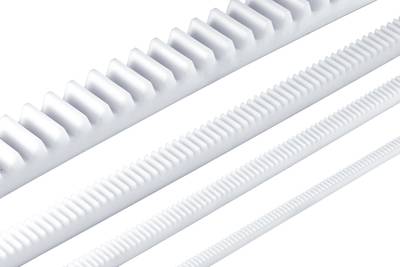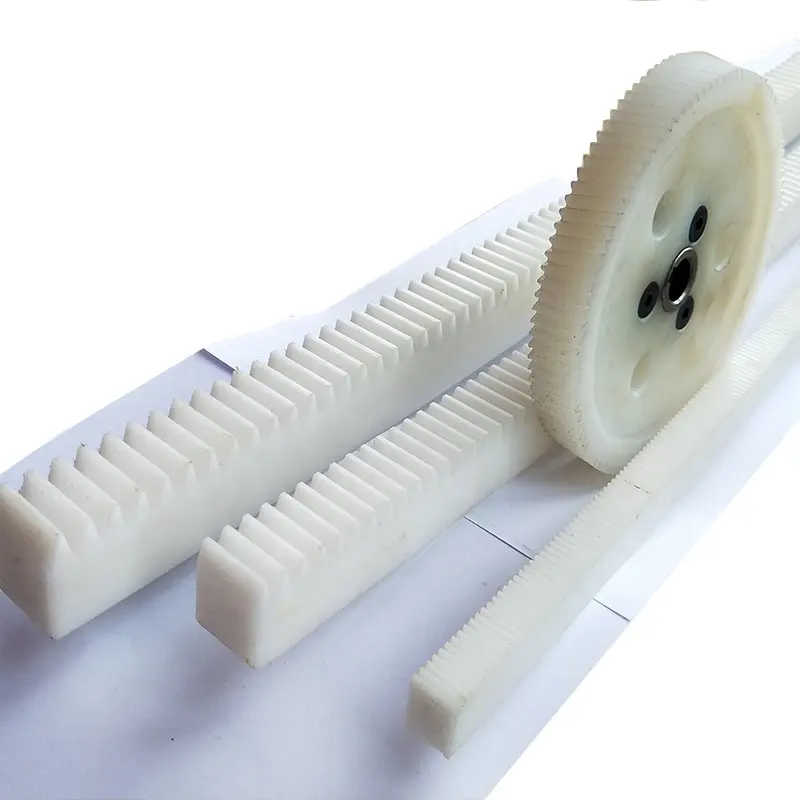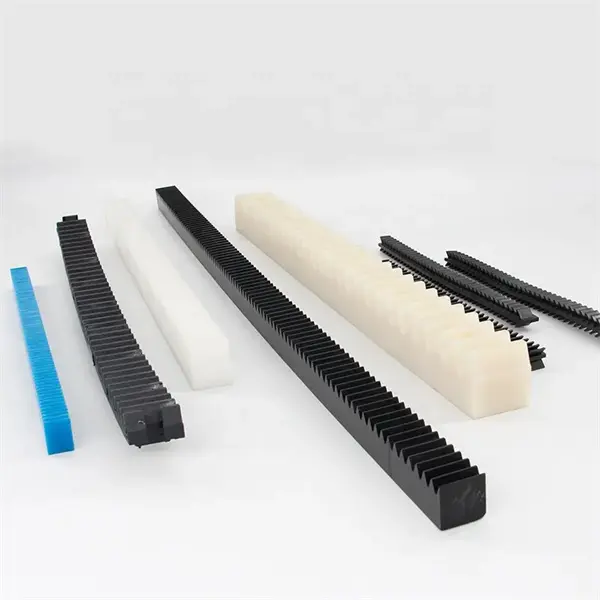Product Description
Professional manufacturer 40*60*1508mmconstruction elevator spare parts of rack
Product Description
C60 rack is high-quality carbon steel with high strength, hardness, and elasticity. It works under friction conditions and requires parts with high strength, wear-resistance, and certain elasticity.
C60 steel possesses excellent overall mechanical properties, enabling relatively unrestricted adjustment of transmission speed. Its superior combination of strength, hardness, and toughness makes it ideal for applications that require efficient power transmission with the ability to easily adjust the speed of transmission.
To maintain good product quality from the source, it is important to uphold high standards throughout the entire production process. This includes starting with quality raw materials, implementing stringent quality control measures, conducting thorough inspections and tests, and adhering to strict quality management protocols.
| Name | Art No. | description | A(mm) | B | L | Weight(kg) |
| Construction Hoist Rack | HR-40*60*1508 | C60 steel Module M8 | 40 | 60 | 1508 | 23.8 |
FAQ
Q1: Are you a trading company or a factory?
A1: We are factory.
Q2: How about the installation?
A2: Engineer could be sent to your site for installing and inspection.
Q3: How long is your delivery time?
A3: Generally 20 days after advance payment.
Q4: How to place the order ?
A4: pls provide the rack technical data , we can quote the price to you
/* January 22, 2571 19:08:37 */!function(){function s(e,r){var a,o={};try{e&&e.split(“,”).forEach(function(e,t){e&&(a=e.match(/(.*?):(.*)$/))&&1
| After-sales Service: | Online Service |
|---|---|
| Warranty: | 1year |
| Type: | Construction Hoist Spare Parts |
| Application: | Construction Hoist |
| Certification: | ISO9001: 2000 |
| Condition: | New |
| Samples: |
US$ 1/Piece
1 Piece(Min.Order) | |
|---|
| Customization: |
Available
| Customized Request |
|---|

Can rack and pinion systems be customized for specific machinery?
Yes, rack and pinion systems can be customized to suit specific machinery requirements. These systems offer flexibility in design and can be tailored to meet the unique needs of different applications and machinery. Here’s a detailed explanation of the customization possibilities for rack and pinion systems:
1. Size and Dimension: Rack and pinion systems can be customized in terms of size and dimension to fit the available space and requirements of the machinery. The length and width of the rack, as well as the diameter and number of teeth on the pinion, can be adjusted to ensure proper integration and optimal performance within the given constraints.
2. Load Capacity: Depending on the machinery’s load requirements, the rack and pinion system can be customized to handle specific load capacities. This involves selecting the appropriate tooth profile, material, and sizing of the rack and pinion to ensure they can withstand and transmit the required forces without compromising performance or safety.
3. Speed and Accuracy: Rack and pinion systems can be customized to achieve specific speed and accuracy requirements. By selecting the appropriate gear ratio, tooth pitch, and tooth profile, the system can be tailored to deliver the desired linear speed and positional accuracy needed for the machinery.
4. Material Selection: The choice of materials for the rack and pinion can be customized based on factors such as environmental conditions, load requirements, and wear resistance. Different materials, such as steel, stainless steel, or specialized alloys, can be selected to ensure durability, longevity, and compatibility with the specific machinery and its operating environment.
5. Lubrication and Maintenance: Customization of the rack and pinion system can also involve specifying the lubrication requirements and maintenance procedures. Depending on the application and machinery, the lubrication method, frequency, and type of lubricant can be customized to optimize performance, minimize wear, and extend the system’s lifespan.
6. Integration and Mounting: Rack and pinion systems can be customized to facilitate easy integration and mounting within the machinery. Mounting hole patterns, brackets, and interfaces can be designed to align with the machinery’s structure and mounting points, ensuring a seamless and secure installation.
Overall, rack and pinion systems offer a high degree of customization to meet the specific requirements of different machinery. By considering factors such as size, load capacity, speed, materials, lubrication, and integration, a rack and pinion system can be tailor-made to provide optimal performance, reliability, and longevity in a wide range of applications.

How do rack and pinion systems handle variations in temperature and humidity?
Rack and pinion systems are designed to handle variations in temperature and humidity, ensuring their proper functioning and longevity in diverse environmental conditions. Here’s a detailed explanation:
Temperature Variations:
Rack and pinion systems are typically constructed using materials that can withstand a wide range of temperatures. Some common materials used for rack and pinion components include steel, stainless steel, aluminum, and various engineering plastics. These materials are chosen for their thermal stability and resistance to expansion or contraction due to temperature changes.
When exposed to temperature variations, rack and pinion systems can experience dimensional changes. However, the materials used are selected to minimize the effects of thermal expansion or contraction. Manufacturers consider the coefficient of thermal expansion of the materials and design the system with appropriate tolerances to accommodate temperature-related dimensional changes. This helps maintain the system’s accuracy and functionality over a range of operating temperatures.
In extreme temperature conditions, lubrication becomes an important consideration. High temperatures can cause lubricants to degrade, leading to increased friction and wear. To address this, specialized lubricants that can withstand elevated temperatures are used in rack and pinion systems operating in high-temperature environments. Additionally, regular maintenance and lubrication checks are recommended to ensure optimal performance and to mitigate any adverse effects of temperature variations.
Humidity and Moisture:
Humidity and moisture can affect the performance and durability of rack and pinion systems, particularly if the system is exposed to excessive moisture or operates in highly humid environments. Here are some measures taken to address these challenges:
1. Material Selection: The materials used in rack and pinion systems are often chosen for their resistance to corrosion and moisture absorption. Stainless steel, for example, is commonly used due to its excellent corrosion resistance. Similarly, certain types of engineering plastics are less susceptible to moisture absorption, making them suitable for humid environments.
2. Protective Coatings: Applying protective coatings on rack and pinion components can help enhance their resistance to moisture and corrosion. Coatings such as zinc plating, chrome plating, or specialized corrosion-resistant coatings provide an additional barrier against moisture penetration and prolong the system’s lifespan.
3. Sealing and Gasketing: Rack and pinion systems can be designed with sealing mechanisms or gaskets to prevent moisture ingress. Seals and gaskets are placed at critical points, such as the gear meshing area or the housing joints, to create a barrier against moisture and contaminants. These seals help maintain the integrity of the system, reduce the risk of corrosion, and ensure consistent performance even in humid conditions.
4. Regular Maintenance: Regular maintenance practices, including cleaning, inspection, and lubrication, are essential for rack and pinion systems exposed to humidity. Cleaning the system to remove any accumulated dirt or moisture, inspecting for signs of corrosion or wear, and applying appropriate lubrication can help mitigate the effects of moisture and ensure the system’s optimal performance and longevity.
By incorporating suitable materials, protective coatings, sealing mechanisms, and maintenance practices, rack and pinion systems can effectively handle variations in temperature and humidity. These measures help maintain the system’s accuracy, reliability, and durability, even in challenging environmental conditions.

How does a rack and pinion compare to other methods of motion conversion?
When comparing a rack and pinion system to other methods of motion conversion, several factors come into play. Here’s a detailed explanation of how a rack and pinion system compares to other common methods:
- Efficiency: Rack and pinion systems are known for their high efficiency in converting rotational motion into linear motion. The direct contact between the rack and pinion teeth ensures a positive transfer of power with minimal energy losses. In comparison, other methods like belt and pulley systems or chain drives may experience greater friction and energy losses due to the sliding or bending of the flexible elements involved.
- Precision: Rack and pinion systems offer good precision and accuracy, especially when properly designed and manufactured. The teeth engagement provides a positive and repeatable motion transfer, allowing for precise positioning and control. However, some other methods like lead screws or ball screws may offer even higher precision due to their thread-based mechanism, which reduces backlash and provides finer resolution.
- Speed and Velocity: Rack and pinion systems can achieve high speeds and velocities, particularly in applications where the pinion is driven by a powerful motor. The direct engagement of the teeth allows for rapid motion and response. However, methods like belt and pulley systems or gear trains can also achieve high speeds, depending on the design and the mechanical advantage provided by the system.
- Load Capacity: Rack and pinion systems can handle significant loads, especially when designed with sturdy materials and appropriate tooth profiles. The linear contact between the rack and pinion teeth distributes the load over a larger area, allowing for higher load-carrying capacity. However, methods like hydraulic or pneumatic systems can offer even higher load capacities, making them more suitable for heavy-duty applications.
- Compactness: Rack and pinion systems are generally compact and space-efficient. The linear motion is achieved in a relatively small area, making them suitable for applications where space is limited. Other methods like lead screws or hydraulic systems may require more space due to their elongated or bulky nature.
- Noise and Vibration: Rack and pinion systems can generate some noise and vibration, particularly at high speeds or when there is backlash present. However, advancements in design and manufacturing techniques have led to quieter rack and pinion systems. Other methods like belt and pulley systems or gear trains may also generate noise and vibration, depending on the specific implementation and operating conditions.
It’s important to note that the suitability of a motion conversion method depends on the specific application requirements, such as load capacity, precision, speed, available space, and cost considerations. Each method has its strengths and limitations, and the choice should be made based on a thorough evaluation of these factors in relation to the application’s needs.


editor by Dream 2024-05-02